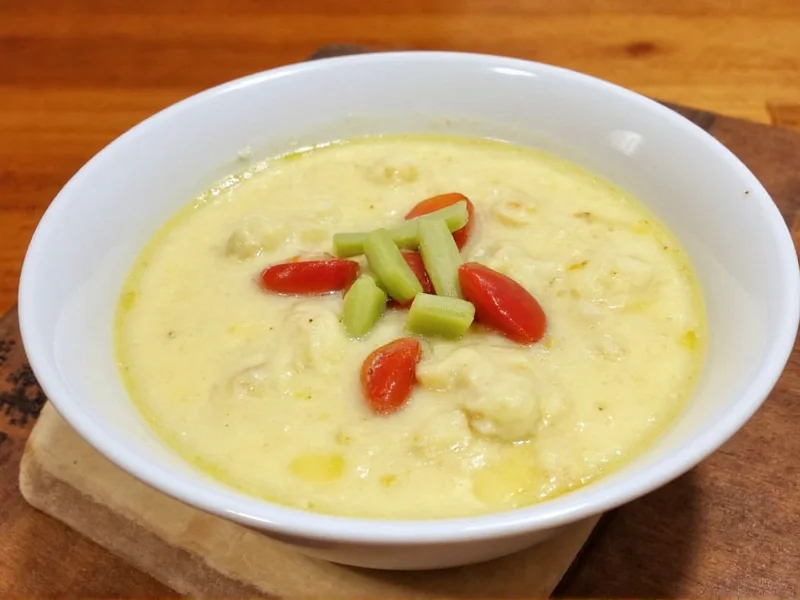Creating creamy potato soup with instant mashed potatoes is a brilliant kitchen hack that delivers restaurant-quality results with minimal effort. Unlike traditional recipes requiring hours of simmering and peeling, this method transforms pantry staples into a velvety, comforting meal in under 30 minutes. The secret lies in how instant potato flakes interact with broth—they dissolve completely while adding body and that signature potato flavor without the risk of graininess or uneven texture.
Why Instant Mashed Potatoes Elevate Soup Quality
Many home cooks mistakenly believe instant mashed potatoes produce inferior results, but they're actually ideal for soups. The dehydration process concentrates potato starch, which acts as a superior thickener compared to roux or cornstarch. When properly incorporated, instant flakes create an emulsion that prevents separation—a common issue with traditional potato soups. Professional chefs often use this technique in high-volume kitchens where consistency and speed are essential.
Essential Ingredients for Perfect Texture
The magic happens through precise ratios. Too many flakes create gluey soup, while too few yield thin broth. This tested formula guarantees balanced results every time:
| Ingredient | Measurement | Key Purpose |
|---|---|---|
| Instant mashed potato flakes | 1 cup (85g) | Primary thickener and flavor base |
| Homemade or low-sodium broth | 4 cups (950ml) | Prevents oversalting from flakes |
| Heavy cream or whole milk | 1 cup (240ml) | Creates velvety mouthfeel |
| Unsalted butter | 3 tbsp (45g) | Enhances flavor absorption |
| Yellow onion, finely diced | 1 medium | Foundation for aromatic depth |
Step-by-Step Preparation Method
Step 1: Build flavor foundation
Sauté onions in butter over medium heat until translucent (5-7 minutes). Avoid browning—this creates sweetness without bitterness. Add minced garlic during the last minute for optimal aroma.
Step 2: Create roux alternative
Whisk in 2 tablespoons of instant flakes with the onions to form a paste. Cooking the flakes briefly removes any raw starch taste while creating a flavor-infused thickener base—more effective than traditional flour roux.
Step 3: Incorporate liquids gradually
Pour in warm broth while whisking constantly. Bring to gentle simmer (do not boil vigorously). Boiling causes instant potatoes to become gummy. Maintain temperature just below simmering point.
Step 4: Add remaining flakes strategically
Remove pot from heat. Gradually whisk in remaining flakes in three additions. This prevents clumping and ensures smooth integration. Return to lowest heat for 5 minutes to allow full hydration.
Step 5: Finish with dairy
Stir in cream off-heat. Adding dairy while soup simmers causes curdling. For extra richness, blend in 2 ounces of cream cheese at this stage.
Troubleshooting Common Texture Issues
Problem: Soup is too thick
Solution: Add broth ¼ cup at a time while reheating gently. Instant potatoes continue thickening as they cool, so aim for slightly thinner consistency than desired.
Problem: Grainy texture
Solution: This occurs when flakes hit boiling liquid. Always incorporate into warm (not hot) broth. If graininess appears, immediately blend soup with immersion blender.
Problem: Flavor lacks depth
Solution: Add 1 teaspoon smoked paprika or 2 strips of cooked bacon during final seasoning. The umami from these ingredients compensates for any flavor loss in dehydrated potatoes.
Pro Chef Techniques for Restaurant-Quality Results
For exceptional depth, replace 1 cup of broth with clam juice—this traditional New England technique enhances potato flavor without making soup taste fishy. Add 2 tablespoons of dry sherry during the final minute of cooking to brighten flavors. Top with chives and a drizzle of truffle oil for an elegant presentation that belies the recipe's simplicity.
Serving and Storage Guidelines
Allow soup to rest 10 minutes before serving—this lets starches fully set for ideal texture. Store in airtight container for up to 4 days. When reheating, add splash of broth as instant potato-based soups thicken significantly when chilled. Freeze for up to 2 months, though texture may become slightly grainy upon thawing.
Frequently Asked Questions
Can I use any brand of instant mashed potatoes for soup?
Yes, but choose premium brands with minimal additives. Basic flakes without powdered cheese or seasonings work best. Avoid 'instant mashed potatoes with real bits' as these create uneven texture. Store brands often contain more fillers that affect consistency.
How do I prevent lumps when using instant mashed potatoes?
Lumps form when flakes hit boiling liquid. Always incorporate into warm (160°F/70°C) broth off-heat. Whisk constantly in a circular motion while adding flakes gradually. An immersion blender for 10 seconds after initial mixing eliminates any remaining clumps.
Why does my potato soup become watery after refrigeration?
This indicates improper hydration. Instant potatoes need time to fully absorb liquid—simmer 5 minutes after adding all flakes. The starch must gelatinize completely, which happens between 180-200°F (82-93°C). If soup separates when chilled, reheat gently while whisking in 2 tablespoons of additional flakes.
Can I make this soup dairy-free using instant mashed potatoes?
Absolutely. Substitute broth for dairy and add 2 tablespoons nutritional yeast for cheesy notes. For creaminess, blend in ½ cup cooked white beans. The potato flakes provide enough body that dairy isn't essential—many traditional Irish potato soups are naturally dairy-free.











 浙公网安备
33010002000092号
浙公网安备
33010002000092号 浙B2-20120091-4
浙B2-20120091-4